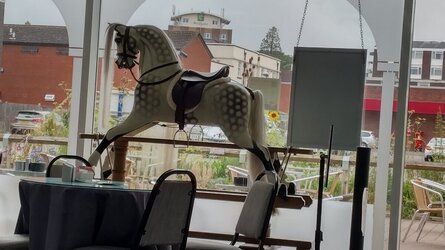@avsd and
@Tenkaykev I promised to speak about bee and insect plants........................the rest of you make tea/coffee, clean the microwave or something as I know I can drone on a bit. Some of this is generalisation.
@avsd you asked about wildflowers and if they suffer from the same problems of sterility as modern cultivars and varieties. The short answer is no, this is not a problem. As a very brief explanation. Many modern, seed raised plants are F1 Hybrids, the result of crossing (pollinating) two stable inbred parent lines, the resulting seed will have some or all characteristics of increased flower size, specific colour, great uniformity, vigour, high yielding amongst other "benefits." I could write more but this should do. F1 Hybrids can be sterile or produce very little pollen and nectar making them little use to insects.
Other types of hybrid to be aware of are "specific" hybrids which are plants arising from a cross between two different species. These can only be reproduced vegetatively, what most people refer to as taking cuttings though there are many other means of vegetative reproduction.
Wild flowers are "open-pollinated" which we can regard as "natural" pollination. To be successful all living things need to reproduce, for most plants this means producing seed. The best method of ensuring pollination is to have insect friendly flowers which will attract pollinators to carry out the pollination.
I have very little knowledge of wildflowers. Some are tolerant of a wide range of conditions, soils etc. while others have specific needs. I suggest you look to introduce easy things. You have three choices for acquiring seed; collect wild seed from plants which grow locally, cheap, easy, abundant and suited to your area. Buy wild flower seeds from a reputable source. I would Google "sources of wildflower seeds uk native" and choose a supplier such as the RSPB. I would avoid buying "wildflower mixtures" from retail seed companies, B&Q etc. Thirdly you have to choose how to raise the plants; two possibilities, simply prepare an area and sow the seed direct on the soil or raise the seedlings in trays, pots etc. and when large enough plant out in the desired location. You can Google all of this and learn far more than I dare write here. Once you begin to establish your area the plants will self-seed etc.
@Tenkaykev I think you're more interested in bee and/or insect friendly garden plants. An easy solution is to choose old-fashioned varieties which are more likely to be insect friendly. Avoid anything which is "new," heavily marketed, fancy pots etc. (the opposite of how I spent my working life!). There are some blindingly obvious ones such Buddleia for butterflies. The key is to look for a wide range of plants which offer a food source throughout the year. Friends of the Earth have good suggestions on their website. In our garden we have good success with lavender, ornamental thistles, Geum, nasturtium, foxgloves, chives, Thyme, common poppy, Allium. If there is something you like the look of Google will quickly give you the answer. Keep an eye on other people's gardens and see what works for them. Avoid double-flowered varieties, the flowers are clogged with petals making access to pollen difficult for insects. Regardless of the plants you choose try to leave a rough patch of grass somewhere to benefit all insects.
Lawn to me is just a green patch. I want it to be semi-decent but when the daisies flower let them, same with clovers etc. Obviously whizz out buttercups, etc. If a weed in the border is attracting insects let it finish flowering and then hoy it out.
I'd best get on now but feel free to ask
. We used to be part of Warwickshire.

 .
.



